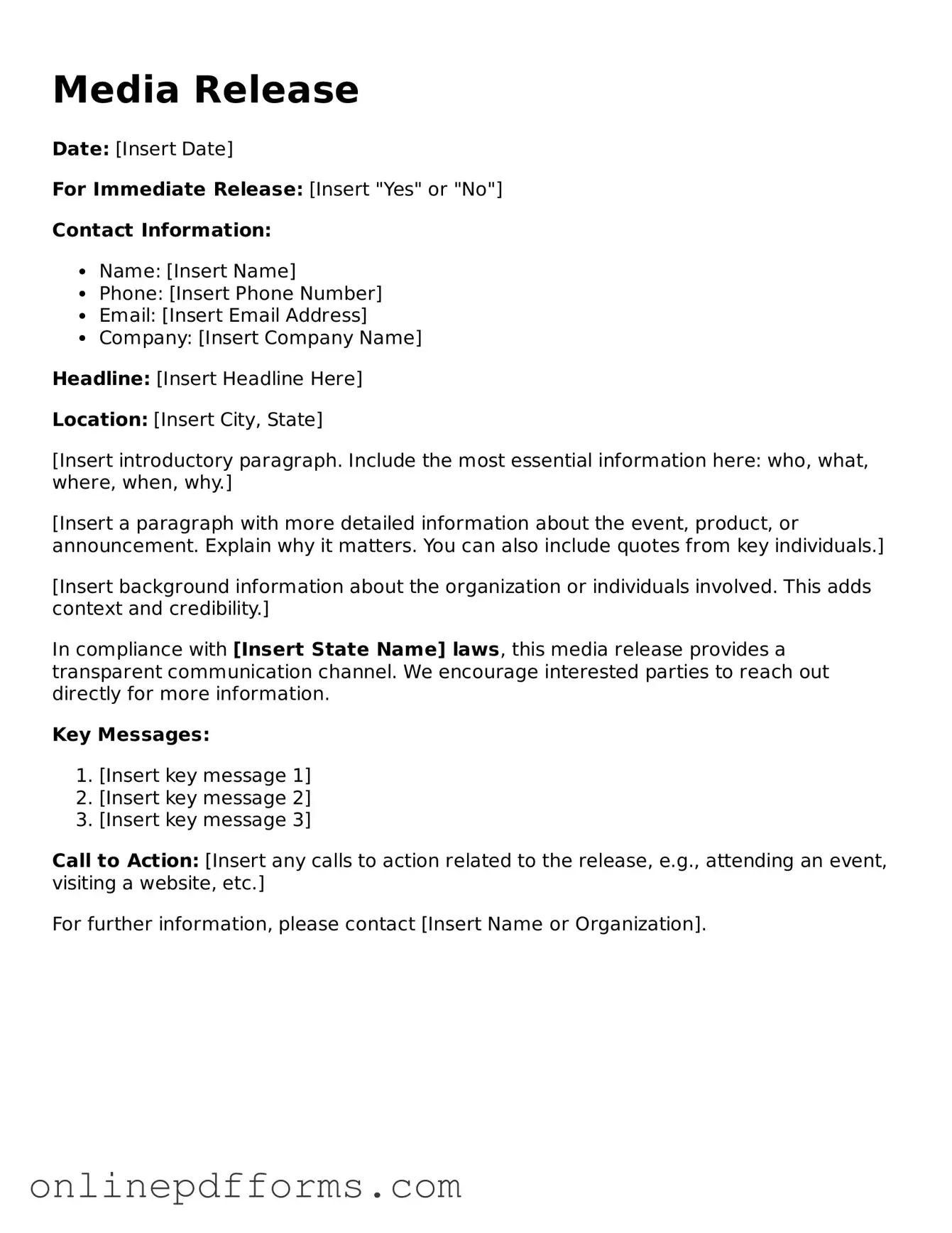The Media Release form is similar to a Consent Form, which is often used to obtain permission from individuals before their personal information or images are used. Like the Media Release, a Consent Form ensures that the person understands what they are agreeing to and that they are aware of how their information will be used. Both documents aim to protect the rights of individuals while allowing organizations to use their likeness or information for specific purposes.
Another document that shares similarities with the Media Release form is the Waiver of Liability. This form is commonly used to release an organization from legal responsibility in case of injury or damage. While the Media Release focuses on the use of personal images or information, the Waiver of Liability centers on protecting the organization from claims related to physical harm. Both documents require clear communication about the risks involved and the rights being relinquished.
The Model Release form is also akin to the Media Release. This document is specifically designed for photographers and artists to obtain permission from subjects before using their images in commercial projects. Just like the Media Release, a Model Release outlines how the images may be used, ensuring that the subject’s rights are respected while allowing the creator to use the images freely for promotional purposes.
Similarly, the Photo Release form serves a comparable purpose. It is used to grant permission for the use of photographs taken of individuals, often in a commercial context. The Photo Release, like the Media Release, specifies the intended use of the images and protects both the photographer and the individual by clarifying the terms of use. This ensures that both parties understand their rights and responsibilities regarding the images.
The Audio Release form is another document that parallels the Media Release. This form is used to obtain permission for the recording and distribution of an individual's voice or audio content. Both the Audio Release and the Media Release emphasize consent and clarity regarding how the recorded material will be used, ensuring that individuals are aware of their rights concerning their audio likeness.
The Release of Liability form is essential for protecting organizations and participants alike in various activities, similar to the Media Release which emphasizes consent for media usage. By requiring individuals to acknowledge the risks involved and relinquish their right to certain legal claims, this form ensures that organizations can operate without fear of legal repercussions. For more detailed guidance on such legal documents, you can refer to floridaforms.net.
In addition, the Video Release form is similar to the Media Release in that it allows for the recording and use of an individual’s likeness in video format. This document ensures that the person being filmed understands the purpose of the recording and consents to its use. Like the Media Release, it aims to protect the rights of the individual while allowing creators to use the footage for various projects.
The Release of Information form is another document that bears resemblance to the Media Release. This form is often used in healthcare and other settings to allow organizations to share personal information with third parties. While the Media Release focuses on images and likenesses, the Release of Information emphasizes the sharing of personal data, ensuring that individuals understand who will access their information and for what purpose.
The Non-Disclosure Agreement (NDA) also shares some characteristics with the Media Release. An NDA is used to protect confidential information shared between parties. While the Media Release deals with the use of images and likenesses, both documents require clear communication and consent regarding what information can be shared and how it will be used. They both serve to protect the interests of the parties involved.
Lastly, the Event Release form is similar to the Media Release in that it is used during events to obtain permission from attendees for the use of their images or likenesses. This form ensures that individuals are aware that they may be photographed or filmed during the event and that their images could be used in promotional materials. Both forms prioritize transparency and consent, fostering a respectful relationship between the organizers and participants.
